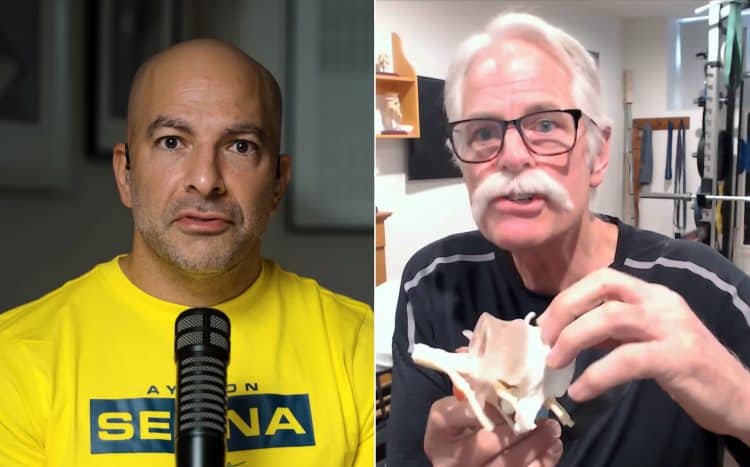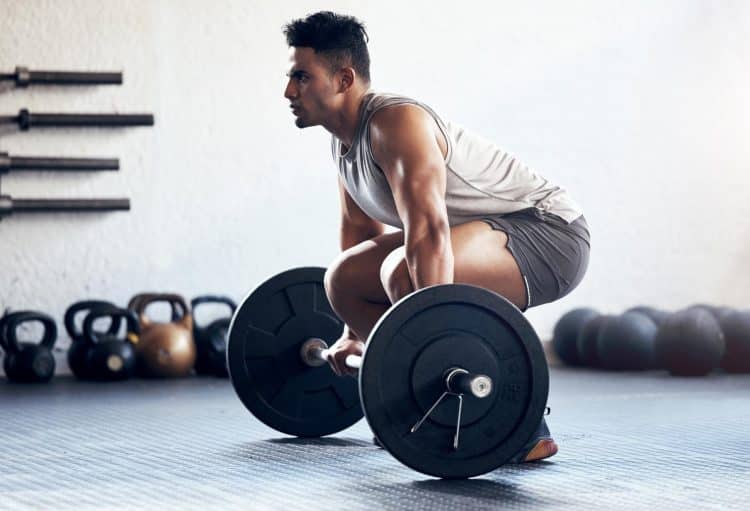Known for tackling fitness and health subjects through a scientific lens, Dr. Peter Attia continues to offer valuable wisdom to those aiming to improve their health. Taking to a recent YouTube video, Attia joined Dr. Stuart McGill for an eye-opening discussion about the risks and rewards associated with squats and deadlifts.
From comprehensive morning routines to conversations about achieving peak physical condition, Peter Attia has become a prolific member of the fitness and bodybuilding sector. He regularly shares informative content that is easy to comprehend. With over 500,000 YouTube subscribers and regular appearances on channels such as Dr. Rhonda Patrick’s Found My Fitness, Attia’s knowledge of exercise and health is unrivaled.
Dr. Stuart McGill, meanwhile, is a successful college Professor who has operated in a teaching capacity for over three decades. He joined Attia to shed some light on the risks that can come from consistently practicing squats and deadlifts.
Dr. Peter Attia and Stuart McGill Debate the Risk/Reward Ratio of Squats and Deadlifts
Given Peter Attia’s love for deadlifting and squats, he has been conflicted over whether they have a permanent place in his workout routine considering the risk of injury.
Level Up Your Fitness: Join our 💪 strong community in Fitness Volt Newsletter. Get daily inspiration, expert-backed workouts, nutrition tips, the latest in strength sports, and the support you need to reach your goals. Subscribe for free!
“I obviously have no desire to do anything that I deem stupid anymore right, so my days of gritting through painful are long over. I know the difference between discomfort that is worth pushing through and pain that is not. But when I think about in particular, squats and deadlifts, I’ll tell you where especially around the deadlift which I — is an exercise I really really enjoy where I feel conflicted.”
According to Attia, deadlifts are an ideal audit for his ‘stability system.’
“Now that I’m so tuned in to how to do this movement correctly, it’s a really wonderful audit for my stability system, right? Again, I’m embarrassed to admit how much I didn’t know when I was deadlifting.”
While Attia used to perform these lifts with brute strength, he mentioned that he has learned techniques for improving the movement over time, though admits he pushes the envelope concerning safety.
“At no point did I understand the importance of tension in the arms, intra abdominal pressure, the variability of foot pressure on the ground, none of that stuff just brute force stupidity. Today, as I know those things, it allows me to modulate force on a good day, kind of push the envelope a little bit in what I perceive is safe.”
“I don’t need to deadlift 400 pounds anymore but I should be deadlifting because it’s this great audit and on the days that I don’t feel it, I back off. On the other days, I say ‘Peter, you don’t need to do this anymore because honestly you can still get the same or nearly the same activation for all of the muscles involved using other movements.”
Attia underlined the value of deadlifting but reinforced his worries about avoiding injuries.
“Deadlifting is valuable but you have a narrow operating table of where you can hurt yourself.”
Next, Stuart McGill gave his thoughts on deadlifts.
“The professional powerlifter will take a week off they train heavy deadlifts or squats once a week because it takes a week for the bone callus to not only attach through the chemical electro attraction but to really scaffold on, it takes a week.”
“If you deadlift in another three or four days, the way some trainers, they may deadlift a client three times a week. That allows those micro fractures to accumulate until finally you got a full blown end plate fracture.”
McGill also provided a movement that can replicate the benefits offered by the deadlift.
“We went for a ten minute walk to a hill that we have and I’ll say here’s why you’re not going to do deadlifts but here’s what I want you to do, I showed them a monster walk, now we’re going to the bottom of the hill and I want you to lean back into the hill and we’re walking backwards. You’re going to align your foot, knee, ankle, and hip, and push through the knee.”
Dr. Peter Attia isn’t the only high-profile name in fitness to open up about his affinity for deadlifting and squatting. Even former seven-time Mr. Olympia Arnold Schwarzenegger discussed his love for weights and his biggest lifts as of late. Specifically, ‘The Austrian Oak’ revealed that he could back squat 525 pounds and deadlift a total of 610 pounds.
There’s no denying the muscle-building benefits of squat and deadlift movements as they recruit several body parts during each rep. For Peter Attia and Stuart McGill, deadlifts and squats are effective exercises but could be replaced with safer alternatives.
Watch the full video from the Peter Attia YouTube channel below:
RELATED:










